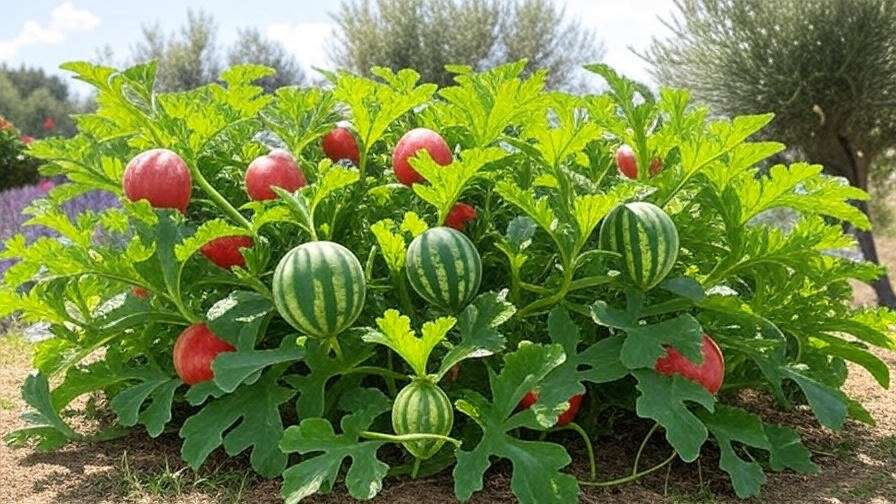Picture this: It’s a scorching summer afternoon, and you slice into a perfectly ripe Italian watermelon, its vibrant red flesh bursting with sweet, refreshing juice. The flavor transports you to a sun-drenched Italian countryside, where these delectable fruits have been cultivated for centuries. Growing a thriving Italian watermelon in your own garden is not only achievable but also deeply rewarding. Whether you’re a novice gardener or a seasoned grower, this comprehensive guide will equip you with expert techniques to cultivate juicy, sweet Italian watermelons that rival those from Mediterranean fields. From selecting the right variety to harvesting at peak ripeness, we’ll cover every step to ensure your success. With my years of experience in horticulture and a passion for Mediterranean crops, I’ll share proven strategies to help you overcome common challenges and enjoy a bountiful harvest.
Understanding Italian Watermelons
What Makes Italian Watermelons Unique?
Italian watermelons, known for their exceptional sweetness and crisp texture, have a rich history rooted in Mediterranean agriculture. Varieties like Crimson Sweet, Sugar Baby, and the heirloom Pistoia are celebrated for their vibrant flesh, distinctive rind patterns, and compact size, making them ideal for home gardens. These cultivars trace their origins to Italy’s fertile regions, where warm summers and fertile soils create perfect growing conditions. Unlike larger commercial varieties, Italian watermelons often prioritize flavor over size, offering a perfect balance of sweetness and juiciness. Their cultural significance in Italian cuisine—think refreshing watermelon salads or chilled slices on a hot day—makes them a favorite among gardeners seeking authentic, high-quality harvests.
Ideal Growing Conditions for Italian Watermelons
To thrive, Italian watermelons demand conditions that mimic their Mediterranean origins. They require full sun exposure (at least 6-8 hours daily) and warm temperatures between 70-85°F. A long growing season, typically 70-90 days, is essential for fruit development. Soil should be well-draining, ideally sandy loam, with a pH between 6.0 and 6.8. Testing your soil’s pH and nutrient levels is a critical first step, as Italian watermelons are sensitive to overly acidic or compacted soils. If you’re in a cooler climate, consider using black plastic mulch to warm the soil and extend the growing season, a technique borrowed from Italian farmers.
Preparing to Grow Italian Watermelons
Choosing the Right Variety
Selecting the right Italian watermelon variety is the foundation of a successful harvest. Below is a comparison of popular cultivars to help you choose based on your garden’s space and climate:
| Variety | Days to Maturity | Fruit Size | Flavor Profile | Disease Resistance |
| Crimson Sweet | 85-90 days | 15-25 lbs | Sweet, juicy | Moderate (Fusarium, Anthracnose) |
| Sugar Baby | 75-80 days | 8-10 lbs | Very sweet, crisp | Good |
| Pistoia (Heirloom) | 80-85 days | 10-15 lbs | Rich, sugary | Moderate |
| San Martino | 80-90 days | 12-20 lbs | Sweet, aromatic | Good |
For small gardens, Sugar Baby’s compact vines are ideal, while Crimson Sweet suits larger spaces. Check seed packets for disease-resistant strains, especially if your area is prone to fungal issues. Local nurseries or university extension services can recommend varieties suited to your region.
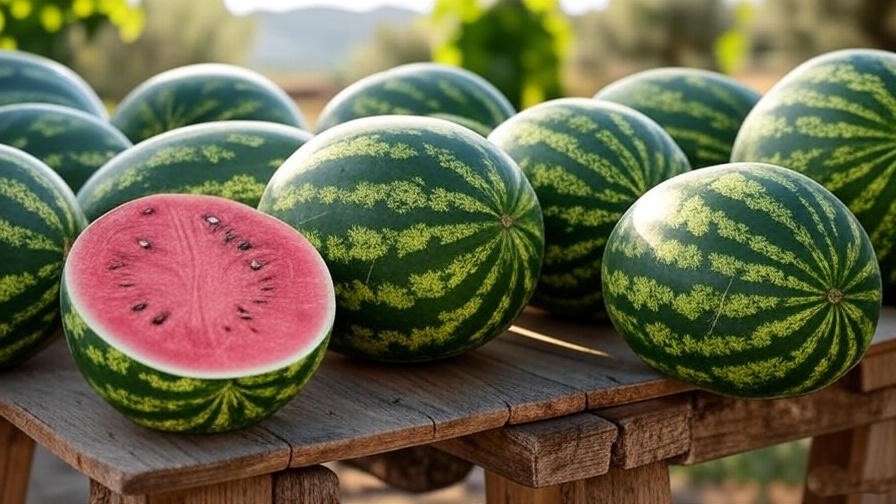
Soil Preparation and Testing
Healthy soil is non-negotiable for Italian watermelons. Start by testing your soil’s pH using a home kit or professional service (available through local agricultural extensions). Aim for a pH of 6.0-6.8, amending with lime to raise pH or sulfur to lower it, as needed. Incorporate 2-4 inches of organic matter, such as compost or aged manure, to boost fertility and improve drainage. Avoid heavy clay soils, which can suffocate roots. Aerate the soil with a garden fork to ensure loose, crumbly texture, allowing roots to spread easily. A well-prepared soil bed sets the stage for vigorous growth and abundant fruit.
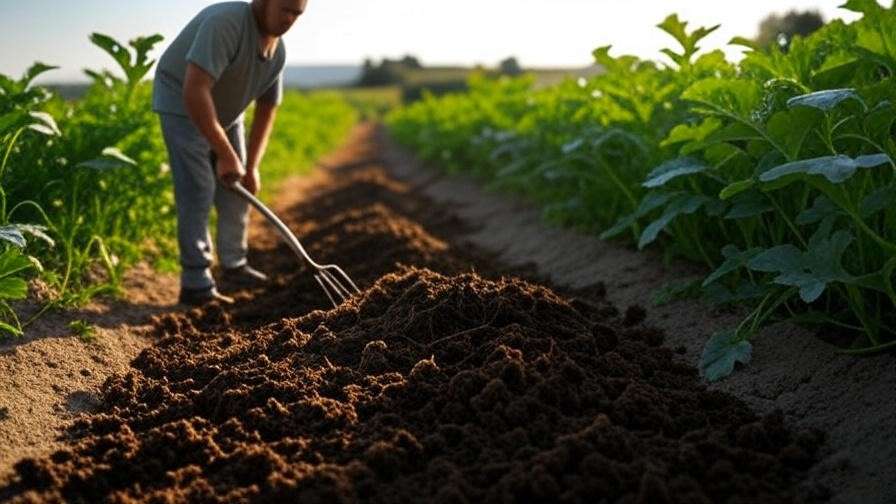
Timing and Location
Timing is critical for Italian watermelons. Plant after the last frost date when soil temperatures reach at least 65°F, typically late spring to early summer. In USDA hardiness zones 7-10, direct sowing works well, while zones 4-6 may require starting seeds indoors. Choose a sunny location with 6-8 feet of space for vines to sprawl. If space is limited, consider trellising or using raised beds. Avoid low-lying areas prone to waterlogging, as excess moisture can harm roots. Italian farmers often plant on gentle slopes to ensure drainage, a practice you can emulate in your garden.
Planting Italian Watermelons
Starting Seeds Indoors vs. Direct Sowing
Deciding whether to start seeds indoors or sow directly depends on your climate and growing season. In cooler regions, start seeds indoors 3-4 weeks before the last frost. Use biodegradable pots to minimize root disturbance during transplanting. Sow seeds 1 inch deep in seed-starting mix, keeping them warm (75-80°F) and moist. For direct sowing in warmer climates, plant seeds 1 inch deep, 3-4 feet apart in rows spaced 6-8 feet apart. Cover with a thin layer of soil and water gently. Direct sowing is simpler but requires warm soil to prevent seed rot.
Transplanting Seedlings
If starting indoors, harden off seedlings by exposing them to outdoor conditions for 7-10 days before transplanting. Gradually increase their time outside to avoid shock. Transplant on a cloudy day or in the evening to reduce stress. Dig holes slightly larger than the root ball, spacing plants 3-4 feet apart. Water thoroughly after planting to settle the soil. Avoid disturbing roots, as Italian watermelons are sensitive to transplant shock. A common mistake is planting too early in cold soil, which can stunt growth—patience is key.

Caring for Italian Watermelon Plants
Watering Requirements
Italian watermelons need consistent, deep watering to thrive, especially during flowering and fruit development. Provide 1-2 inches of water per week, adjusting for rainfall. Drip irrigation is ideal, delivering moisture directly to the root zone without wetting foliage, which reduces disease risk. Hand watering works but requires care to avoid over-saturation. Monitor soil moisture: it should feel like a wrung-out sponge. Overwatering can lead to root rot, while under-watering stresses plants, resulting in smaller, less flavorful fruits. Mulching with straw or black plastic helps retain moisture and regulate soil temperature.
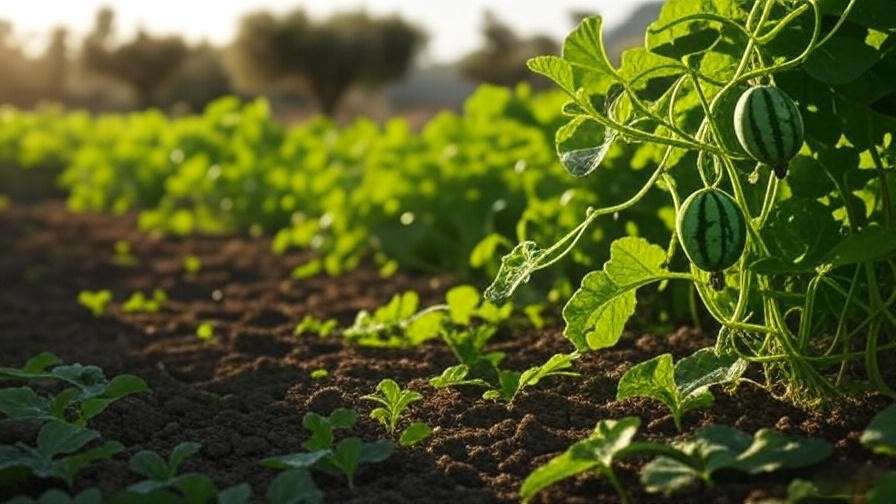
Fertilizing for Optimal Growth
Fertilization fuels healthy growth and bountiful harvests. At planting, apply a balanced fertilizer (10-10-10) to provide nitrogen, phosphorus, and potassium. Once vines start growing, switch to a nitrogen-rich fertilizer (e.g., 20-10-10) to support leafy growth. When flowers appear, transition to a phosphorus and potassium-heavy formula (e.g., 5-10-15) to promote fruit development. Apply fertilizers every 2-3 weeks, following package instructions. For organic gardeners, fish emulsion or compost tea offers a sustainable alternative. Avoid over-fertilizing, which can lead to excessive foliage at the expense of fruit.
Managing Vines and Space
Italian watermelon vines can sprawl 6-12 feet, so managing space is essential. Train vines to grow in a specific direction to maximize sunlight exposure and prevent crowding. Use straw or black plastic mulch to suppress weeds and retain moisture. Prune excessive foliage to improve air circulation, reducing the risk of fungal diseases. If space is limited, consider trellising vines using sturdy supports, ensuring fruits are supported with slings (e.g., old pantyhose). This technique, common in small Italian gardens, saves space and keeps fruits off the ground, reducing pest damage.
Protecting Italian Watermelons from Pests and Diseases
Common Pests and How to Control Them
Italian watermelons face threats from pests like aphids, cucumber beetles, and spider mites. Aphids suck plant sap, weakening vines, while cucumber beetles spread bacterial wilt. Spider mites thrive in hot, dry conditions, causing stippled leaves. Control pests organically with neem oil or insecticidal soap, applied early in the morning. Row covers protect young plants but must be removed during flowering to allow pollination. Companion planting with marigolds or nasturtiums repels pests naturally. Rotate crops annually to prevent pest buildup, a practice rooted in traditional Italian farming.
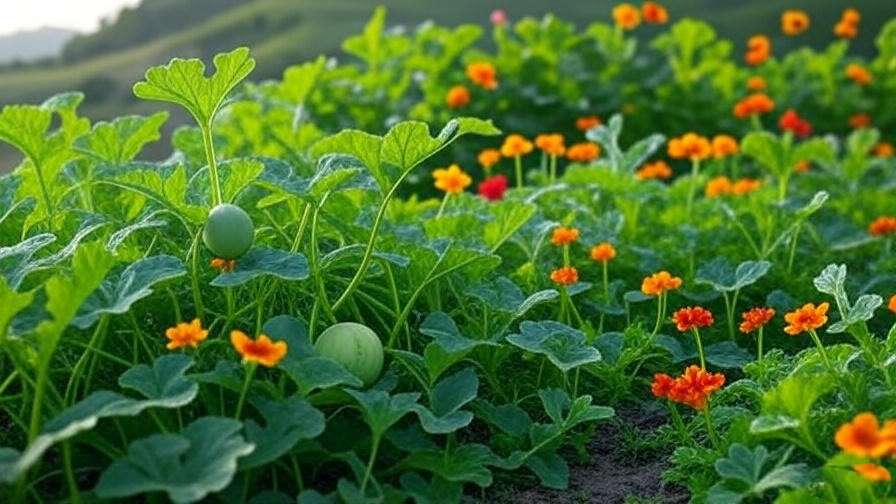
Preventing and Treating Diseases
Fungal diseases like powdery mildew, fusarium wilt, and anthracnose can devastate Italian watermelons. Powdery mildew appears as white patches on leaves, while fusarium wilt causes wilting vines. Anthracnose leads to dark, sunken spots on fruits. Prevent diseases by ensuring proper spacing (3-4 feet between plants) and good air circulation. Apply fungicides like sulfur for powdery mildew or copper-based sprays for anthracnose, following label instructions. Choose disease-resistant varieties like Sugar Baby when possible. Remove and destroy infected plant material to prevent spread, and avoid overhead watering to keep foliage dry.
Harvesting and Storing Italian Watermelons
Knowing When to Harvest
Timing the harvest is critical to enjoy the full sweetness of Italian watermelons. Look for these signs of ripeness: the belly of the watermelon (where it rests on the ground) turns creamy yellow, the rind takes on a dull, waxy appearance, and tapping the fruit produces a hollow sound. Another reliable indicator is the tendril closest to the fruit—when it turns brown and dries up, the watermelon is likely ready. For varieties like Crimson Sweet or Pistoia, this typically occurs 75-90 days after planting, depending on weather and care. Avoid harvesting too early, as unripe watermelons lack the rich flavor and texture that make Italian varieties so special. If unsure, check one fruit to gauge ripeness before harvesting the rest.
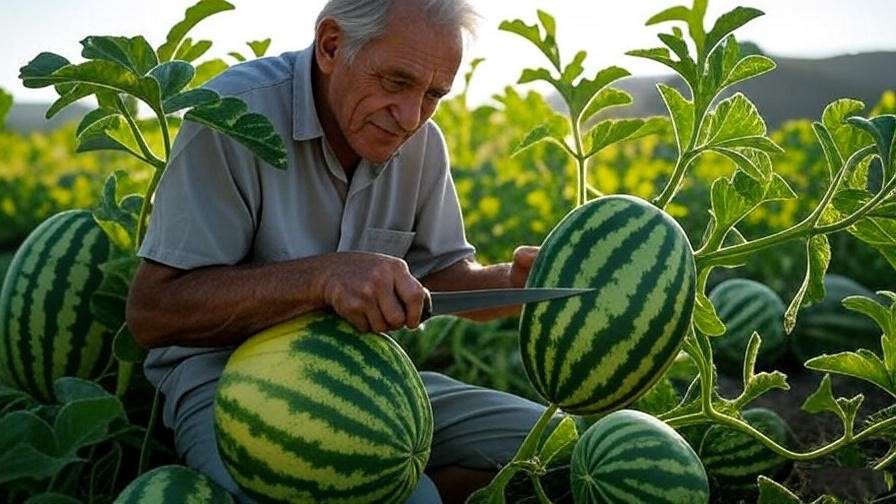
Proper Harvesting Techniques
Harvest Italian watermelons with care to avoid damaging the fruit or plant. Use a sharp knife or garden pruners to cut the stem about 2 inches above the fruit, leaving a small “handle” to prevent rot during storage. Avoid twisting or pulling the fruit, as this can crack the rind or harm the vine, reducing yields from remaining fruits. Handle watermelons gently to prevent bruising, which can spoil the flesh. For best results, harvest in the morning when temperatures are cooler, as this preserves the fruit’s freshness. Clean tools between cuts to avoid spreading disease, a practice emphasized by experienced growers.
Storing and Enjoying Your Harvest
Once harvested, Italian watermelons can be stored for 2-3 weeks in a cool, dry place (50-60°F), such as a basement or garage. Avoid stacking fruits to prevent pressure bruises. For immediate enjoyment, refrigerate sliced watermelon to enhance its crispness. To extend shelf life, freeze cubes for smoothies or blend into sorbets—a nod to Italian dessert traditions. Try creative recipes like a watermelon-feta salad with mint, a staple in Mediterranean cuisine, or grill slices for a smoky-sweet treat. Proper storage ensures you savor the fruits of your labor well into the season.
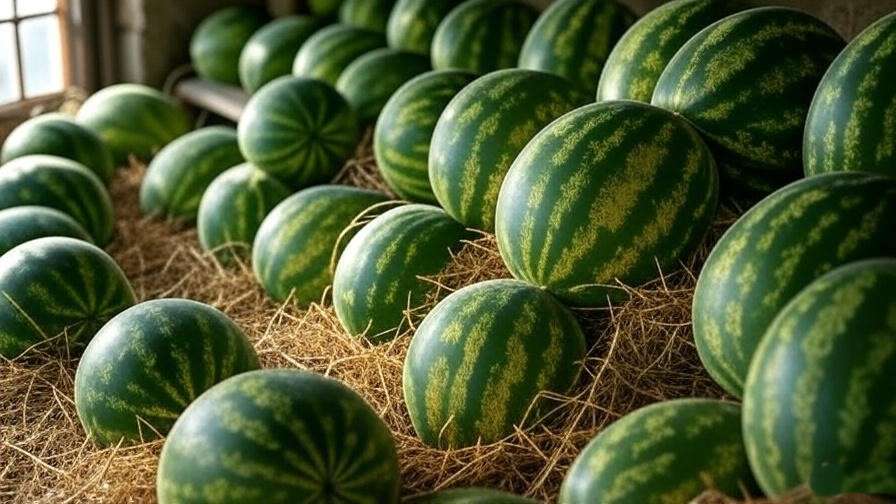
Troubleshooting Common Italian Watermelon Growing Problems
Poor Fruit Set or Small Fruits
If your Italian watermelons produce few or undersized fruits, several factors could be at play. Inadequate pollination, often due to low bee activity, is a common culprit. To boost pollination, gently transfer pollen from male to female flowers using a small paintbrush, mimicking natural pollinators. Nutrient deficiencies, particularly low potassium or phosphorus, can also stunt fruit growth. Test your soil and apply a fertilizer high in these nutrients (e.g., 5-10-15) during flowering. Water stress—either too much or too little—can reduce fruit size, so maintain consistent moisture with 1-2 inches per week. Addressing these issues early can significantly improve yields.
Cracked or Split Watermelons
Cracked watermelons are a frustrating issue, often caused by irregular watering or rapid growth spurts after heavy rain. When plants receive inconsistent moisture, fruits expand too quickly, splitting the rind. To prevent this, use mulch to regulate soil moisture and water deeply but evenly. During heatwaves, provide partial shade with cloth to reduce stress on developing fruits. If splitting occurs, harvest affected fruits immediately for eating or juicing, as they won’t store well. Monitoring weather forecasts and adjusting watering schedules can minimize this problem, ensuring picture-perfect Italian watermelons.
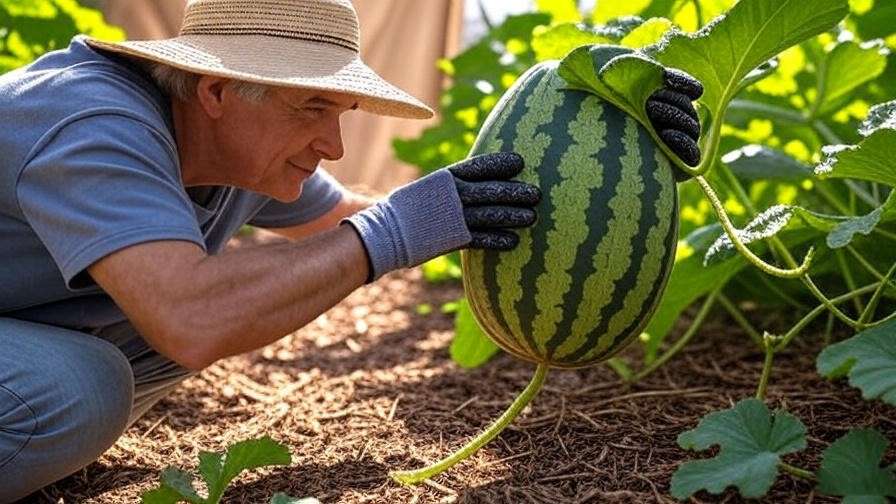
Expert Tips for Maximizing Italian Watermelon Yields
To take your Italian watermelon harvest to the next level, consider these advanced techniques. Trellising is a game-changer for small gardens—use sturdy A-frame supports and secure fruits with slings made from old fabric or netting to prevent vine damage. Early in the season, cover soil with black plastic to warm it faster, extending the growing period in cooler climates. Companion planting with beans or corn can enhance soil nutrients and deter pests naturally. A case study from a Tuscan grower highlights success with interplanting marigolds to repel beetles, yielding 20% more fruit. Limit each vine to 2-3 fruits to concentrate energy, resulting in larger, sweeter watermelons.
FAQs About Growing Italian Watermelons
Q1: How long does it take for Italian watermelons to mature?
A: Most Italian watermelon varieties, like Sugar Baby or Crimson Sweet, take 75-90 days to mature, depending on climate and care. Check tendrils and rind color for ripeness.
Q2: Can I grow Italian watermelons in containers?
A: Yes, compact varieties like Sugar Baby thrive in large containers (15-20 gallons) with well-draining soil. Ensure full sun and support sprawling vines with stakes or trellises.
Q3: What’s the best way to improve sweetness in my watermelons?
A: Sweetness depends on sunlight, nutrients, and timing. Provide 8+ hours of sun, use potassium-rich fertilizer during fruiting, and harvest at peak ripeness.
Q4: How do I know if my watermelon is overwatered?
A: Signs include yellowing leaves, soggy soil, or root rot. Reduce watering and ensure proper drainage to prevent waterlogging.
Q5: Are Italian watermelons resistant to common pests?
A: Some varieties, like San Martino, offer moderate resistance to pests and diseases, but proactive measures like row covers and crop rotation are essential.
Conclusion
Growing thriving Italian watermelons is a journey of patience and care, but the reward—a juicy, sweet harvest—is well worth the effort. By selecting the right variety, preparing nutrient-rich soil, providing consistent water and nutrients, and protecting against pests and diseases, you can cultivate watermelons that rival those from Italy’s sun-soaked fields. Whether you’re savoring a chilled slice or sharing a vibrant salad with friends, your homegrown Italian watermelons will bring joy to your table. Start planting today, and share your progress in the comments below—I’d love to hear about your gardening adventures! For more plant care tips, explore our guides on growing cucumbers, tomatoes, and organic pest control.

